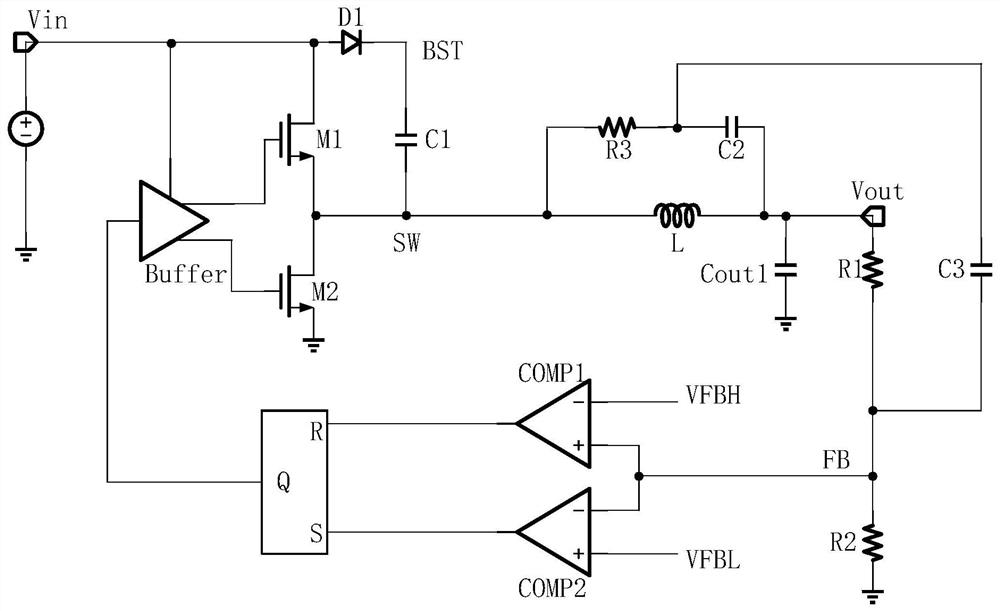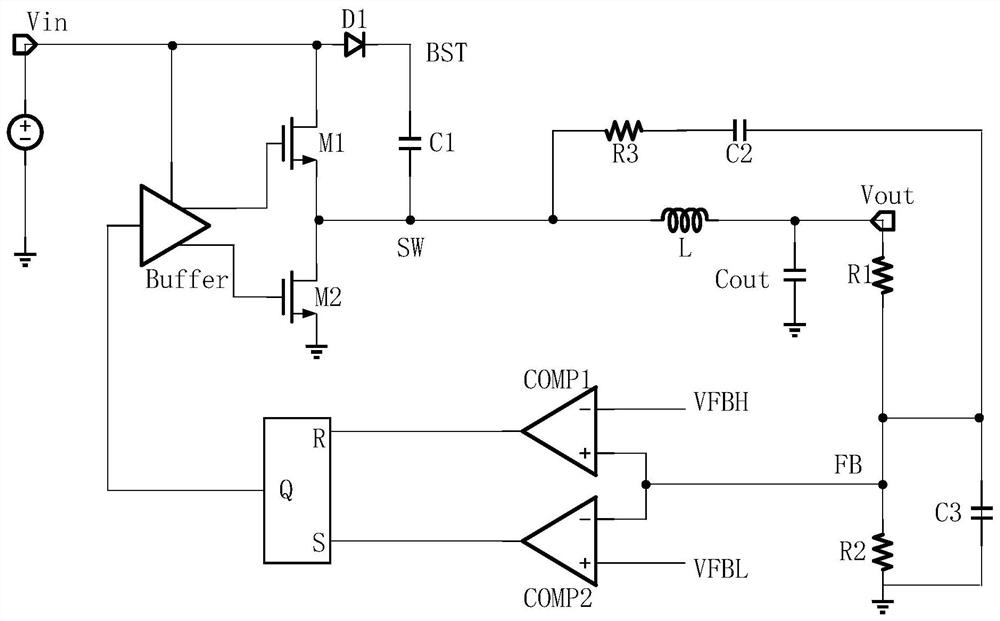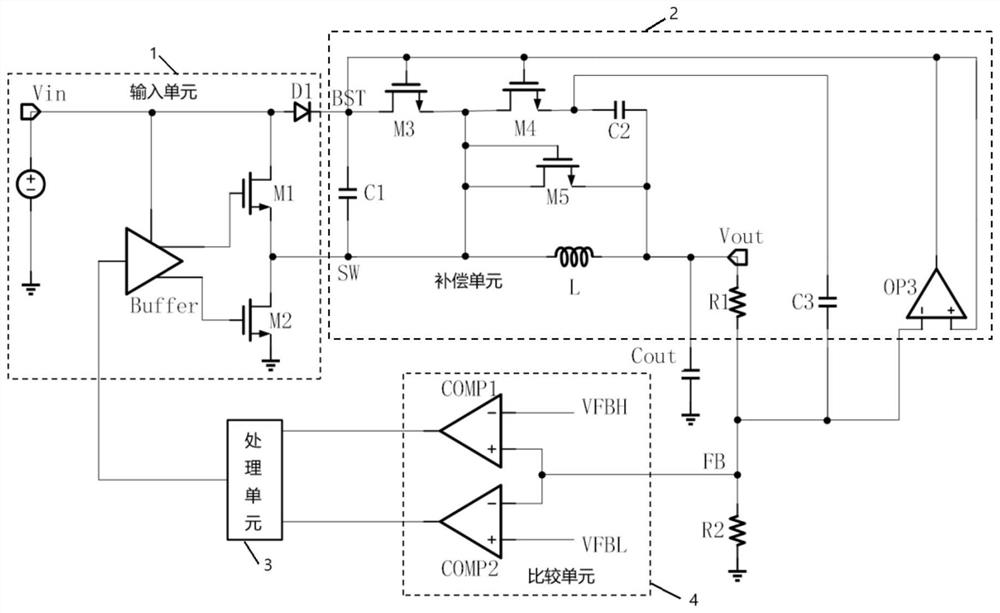Adaptive hysteresis control converter for enhancing transient characteristics, control method and equipment
A transient characteristic, hysteretic control technology, applied in control/regulation systems, output power conversion devices, DC power input conversion to DC power output, etc. Compensation capability, improving transient characteristics, achieving the effect of stability
- Summary
- Abstract
- Description
- Claims
- Application Information
AI Technical Summary
Problems solved by technology
Method used
Image
Examples
Embodiment Construction
[0040] In order to make the purpose, features and advantages of the present application more obvious and understandable, the present application will be further described in detail below in conjunction with the accompanying drawings and specific implementation methods. Apparently, the described embodiments are some of the embodiments of the present application, but not all of them. Based on the embodiments in this application, all other embodiments obtained by persons of ordinary skill in the art without creative efforts fall within the protection scope of this application.
[0041] It should be noted that, in any embodiment of the present invention, the Buck converter is a step-down switching converter; the MOS is a metal-oxide-semiconductor field-effect transistor; V FB is the feedback voltage; FB is the feedback node of the converter; Fs is the switching frequency of the converter; C out is the output capacitor; Resr is the equivalent internal impedance of the output capac...
PUM
 Login to View More
Login to View More Abstract
Description
Claims
Application Information
 Login to View More
Login to View More - R&D
- Intellectual Property
- Life Sciences
- Materials
- Tech Scout
- Unparalleled Data Quality
- Higher Quality Content
- 60% Fewer Hallucinations
Browse by: Latest US Patents, China's latest patents, Technical Efficacy Thesaurus, Application Domain, Technology Topic, Popular Technical Reports.
© 2025 PatSnap. All rights reserved.Legal|Privacy policy|Modern Slavery Act Transparency Statement|Sitemap|About US| Contact US: help@patsnap.com



